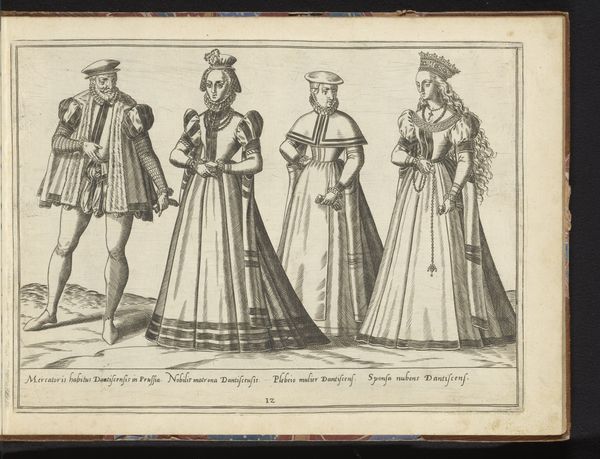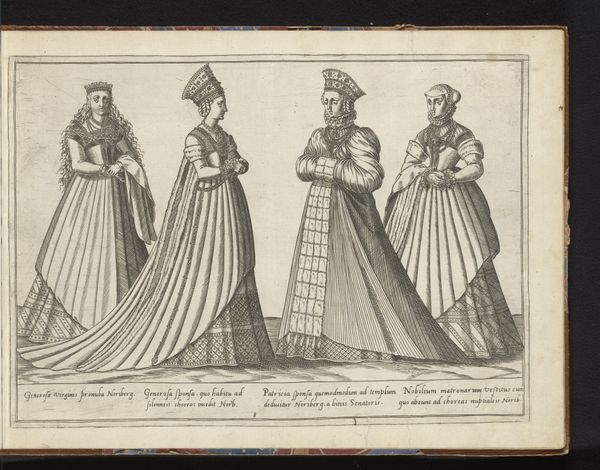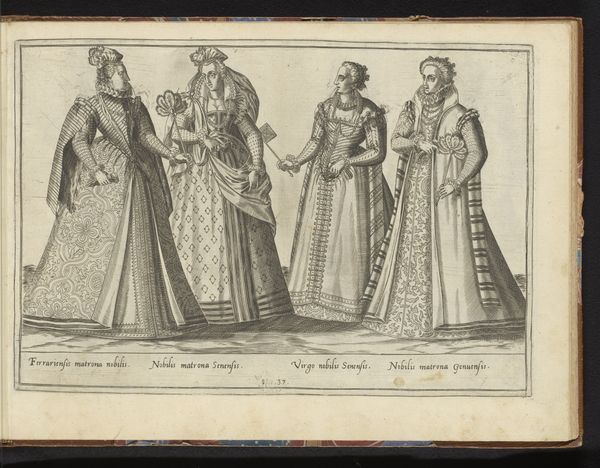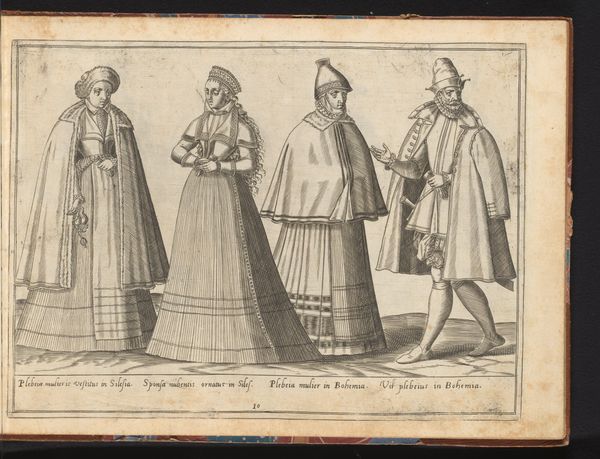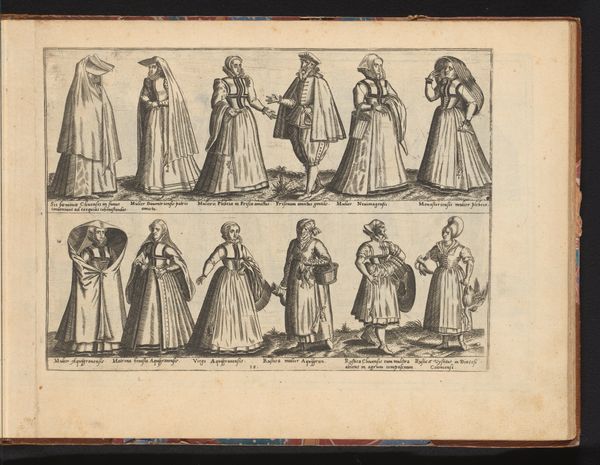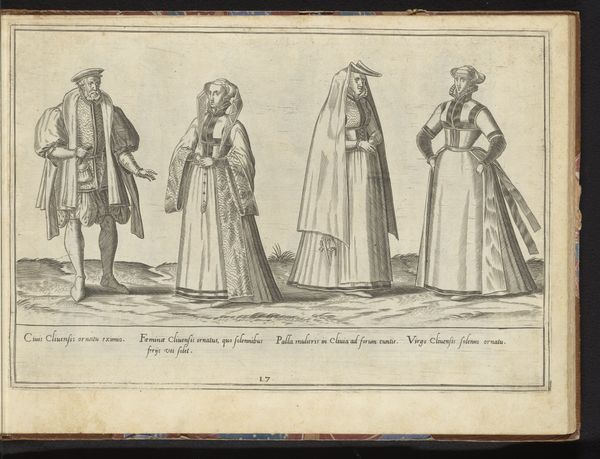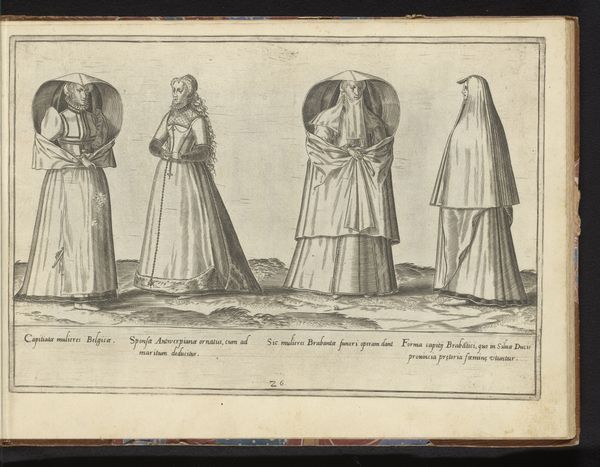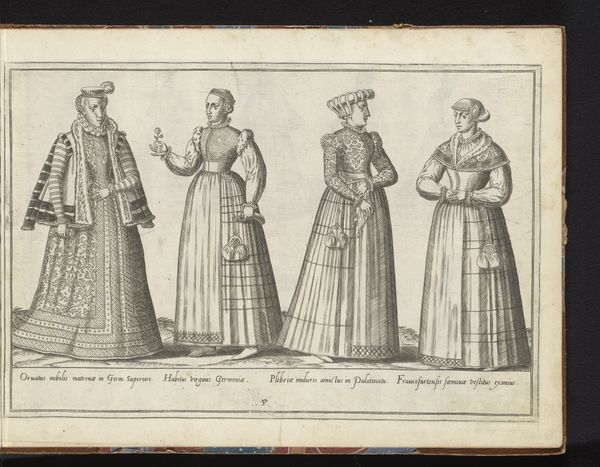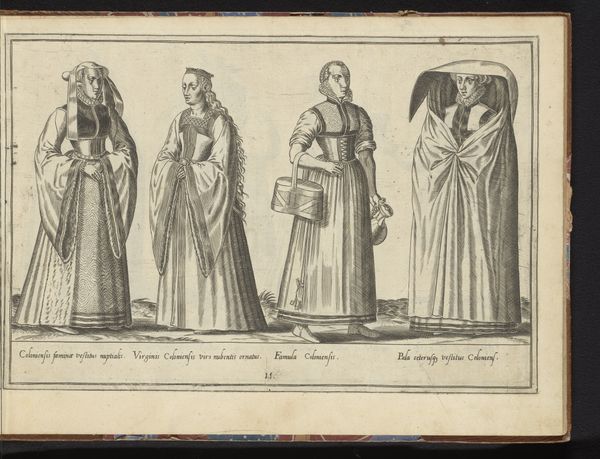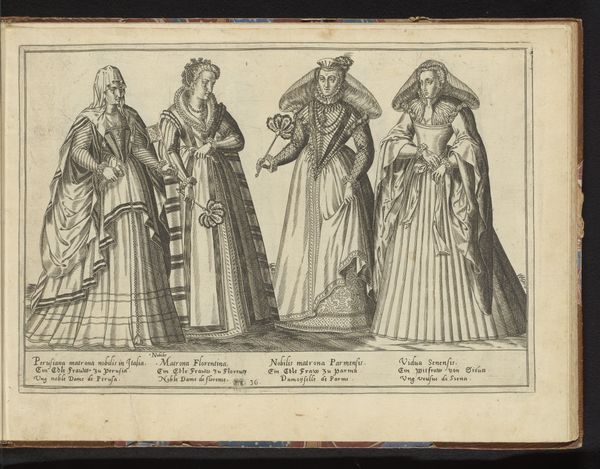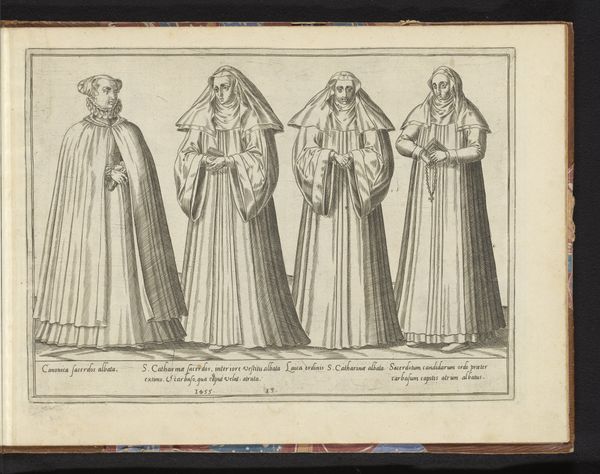
Vier vrouwen uit verschillende standen, gekleed volgens de mode van ca. 1580 1581
0:00
0:00
drawing, print, engraving
#
portrait
#
drawing
# print
#
figuration
#
11_renaissance
#
coloured pencil
#
group-portraits
#
history-painting
#
northern-renaissance
#
engraving
Dimensions: height 265 mm, width 360 mm
Copyright: Rijks Museum: Open Domain
This print, made around 1580 by Abraham de Bruyn, offers us a glimpse into the fashion and social strata of the time, rendered through the meticulous technique of engraving. De Bruyn, born in Antwerp, was a master of translating the world around him into graphic form. The material here is essential: the metal plate, the sharp burin, the precise application of ink, all demanding a high level of skill and control. Note how the engraved lines define the fabrics, from the simple garments of the working class woman, to the elaborate gowns of the nobility. Each line meticulously placed to suggest the texture, weight, and fall of the cloth. The act of engraving itself speaks to the social context of the image, a process that allows for reproduction and dissemination of knowledge. Prints like these were a means of communicating not just fashion, but also social aspirations and distinctions. It invites us to consider the labor involved, both in the making of clothing and in the creation of the image itself. It reminds us that even in depictions of fashion, materials, making, and social distinctions are closely intertwined.
Comments
No comments
Be the first to comment and join the conversation on the ultimate creative platform.
